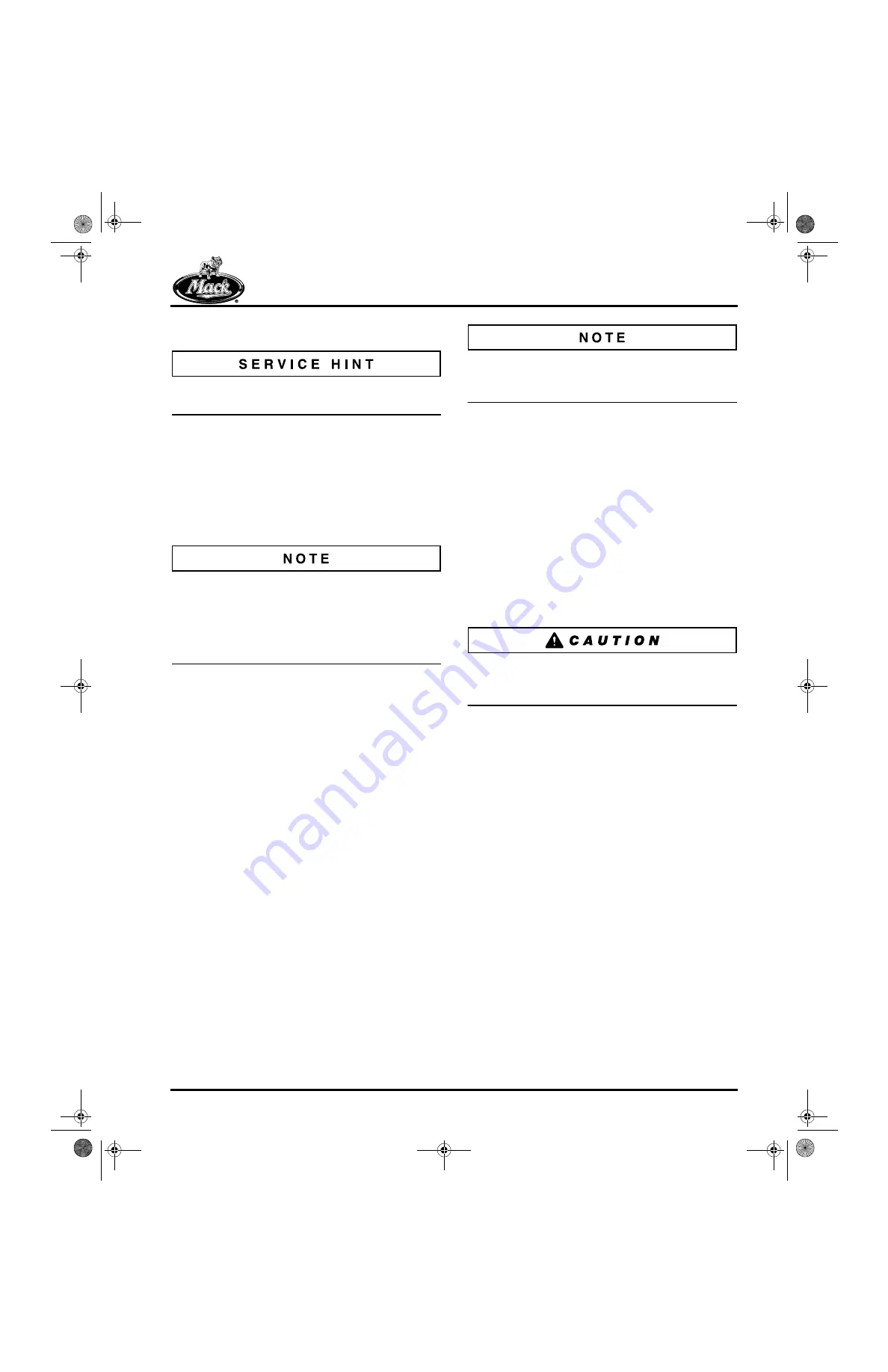
TROUBLESHOOTING
Page 69
Restriction Pressure Test
Perform the restriction pressure test at maximum
full-load condition.
A restriction in the internal portion of the cooler
may interfere with proper airflow and can result in
excessively high pyrometer readings. To perform
a restriction pressure test, use the following
procedure:
1. Install pressure gauge lines at both the inlet
and outlet tubes of the charge air cooler.
Some units are equipped with connection ports
on the inward sides of the inlet and outlet charge
cooler tubes. If so equipped, the plugs can be
removed from these ports and the gauge lines
connected. If not, adapters with gauge ports must
be installed in the cooler inlet and outlet tubes.
2. Install the appropriate pressure gauge(s) to
the cooler inlet and outlet tubes.
3. Start the engine and while operating it at full-
load condition, read the pressure drop
across the cooler.
r
If the pressure drop is higher than 2 psi
(13.79 kPa) at full-load condition, the
cooler has internal restrictions.
r
If the pressure drop is lower than 2 psi
(13.79 kPa), the cooler is OK and can
remain in service.
If using manometers for this test, the difference
between readings should not exceed 4 in-Hg
(13.5 kPa).
4. Stop the engine.
5. If the pressure drop is higher than the
specified amount, remove the cooler from
the vehicle and flush the inside. Follow the
procedure covered under CMCAC
Preventive Maintenance to remove any
deposits that may be present. Reinstall the
cooler and then pressure-test the cooler.
6. If the cooler passes the restriction and
pressure tests, remove the test equipment,
reinstall inlet and outlet tubes, hoses and
clamps. Reinstall the gauge-port plugs on
systems so equipped. Tighten the clamps to
38 lb-in (4.3 N•m).
The clamp springs must always be located on the
underside of the tube to avoid damaging the hood
when closed.
5_106_00.bk Page 69 Friday, August 4, 2000 11:17 AM
BDC for engine manuals and specs






























